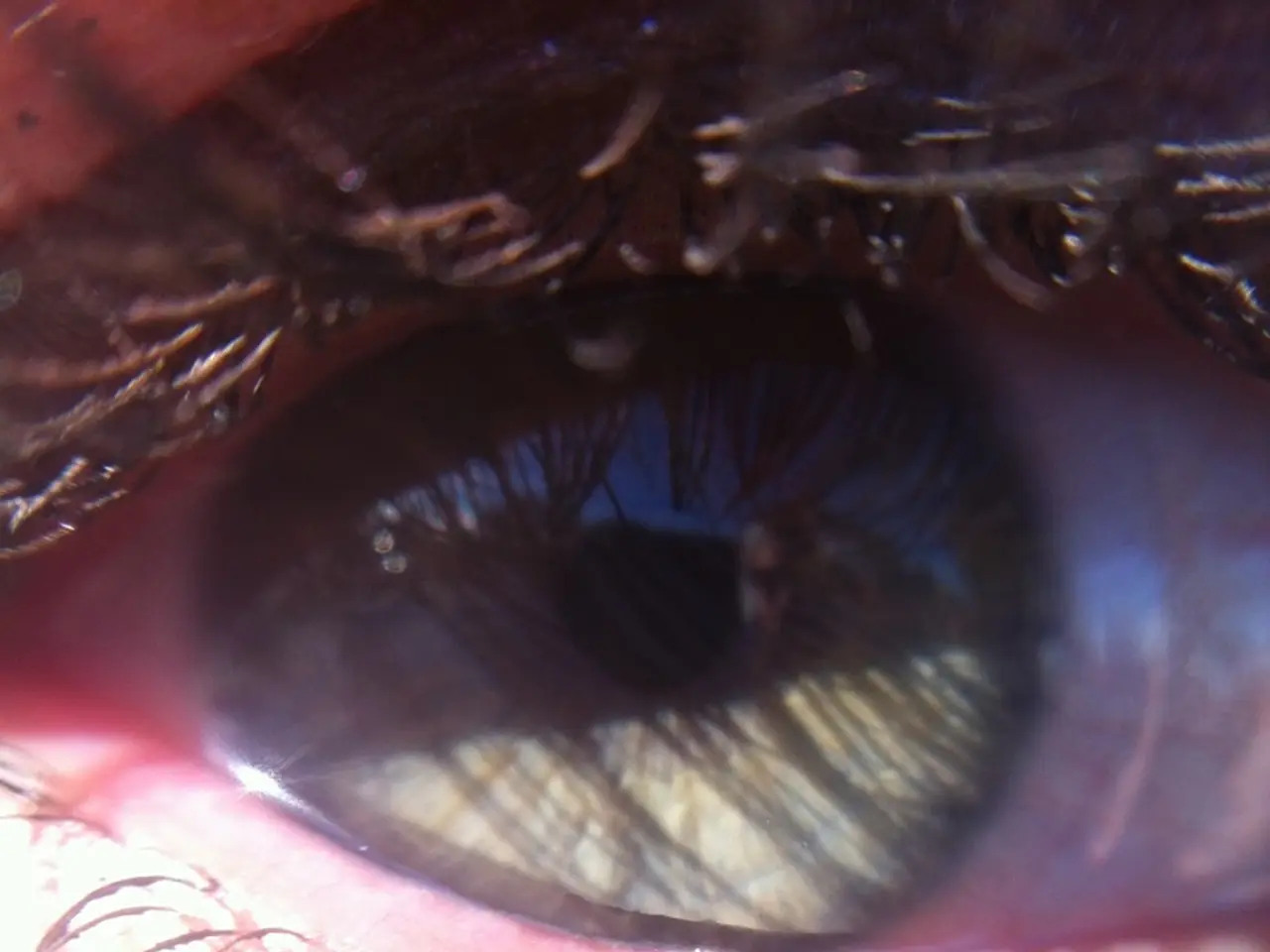Unclosed Eyelids Leading to Keratoconjunctivitis: Potential for Corneal Injury
Exposure Keratoconjunctivitis (EKC), a condition that affects the cornea and conjunctiva, is often caused by incomplete eyelid closure or exposure to environmental irritants. This condition, distinct from allergic conditions like vernal keratoconjunctivitis, can lead to eye surface inflammation and discomfort.
Common causes of EKC include inadequate eyelid closure due to facial nerve palsy, eyelid malposition, thyroid disease, or surgery. Environmental factors such as wind, dust, smoke, chemical fumes, dry climates, swimming pool chlorine, and irritants like foreign bodies can also contribute. Secondary effects from contact lens use, particularly if lenses are worn improperly or over prolonged periods, are another cause. Aging-related degenerative changes can also lead to poor tear film and exposure, especially in older adults.
Preventing EKC involves protecting the eyes from environmental irritants, maintaining good eye hygiene, and managing underlying causes of incomplete eyelid closure. Wearing protective eyewear in dusty, windy, or smoky conditions, using lubricating eye drops/ointments, eyelid taping at night, or surgery if needed can help prevent EKC. Avoiding exposure to known irritants like smoke, chemicals, or swimming pool chlorine, following proper contact lens care, and using artificial tears or lubricants can also help maintain adequate moisture on the eye surface.
Since EKC is related to exposure and irritation rather than allergy or infection, prevention focuses mainly on protecting the eye surface from drying and external insults. Identifying underlying causes of eyelid dysfunction and avoiding irritants are key to prevention.
Symptoms of EKC include eye dryness, irritation, redness, foreign body sensation, blurred vision, photophobia, excessive tearing/dryness, difficulty closing the eyes, sharp pain, and mucopurulent discharge. Treatment of EKC is based on the underlying cause of the disease, and management strategies may differ from person to person, considering the severity of the patient’s condition.
Preventative measures for EKC include modifying the environment, regular eye exams, surgical prevention at early stages of lagophthalmos, removing artificial lashes before surgery, and maintaining proper hygiene. Treatment options for EKC include artificial tears, lubricant oils, taping, surgical intervention, and reconstruction procedures of the eyelid. New and innovative medical treatments for EKC are being developed, including biologics, autologous serum, regenerative treatments, and stem cell therapy.
Conditions such as Bell's Palsy and other neurological conditions can cause lagophthalmos, making it more difficult to move the eyes properly and leading to incomplete eyelid closure. Lagophthalmos is a condition where the eyelids are unable to fully close, leading to EKC. Normal eyelid mechanics are crucial for eye protection and lubrication, as they help coat the eyes with a tear film and enable blinking.
Keratoconjunctivitis is a collective term for inflammatory conditions affecting the superficial cornea and conjunctiva. Corneal damage can occur due to mechanical abrasions, chemical injuries, infections, or improper wearing of contact lenses. Going under anaesthesia can increase the risk of EKC, as more than 50% of patients are unable to close their eyes completely and the eyes may be vulnerable to injury and dryness. Skin conditions that restrict eyelid movement, such as eczema, or tumors pushing the eyeball forward can also lead to lagophthalmos.
- Maintaining good health and wellness, especially mental health, is crucial in managing chronic diseases and coping with the discomfort caused by health conditions like Exposure Keratoconjunctivitis (EKC).
- In the realm of medical-conditions and health-and-wellness, treatments for EKC can range from artificial tears and lubricant oils to surgical intervention and even innovative science-based approaches like biologics, autologous serum, regenerative treatments, and stem cell therapy.
- The science behind EKC and its prevention indicates that protecting the eyes from environmental irritants and maintaining proper sleep habits, such as eyelid taping at night, are key factors in preventing this condition.
- To avoid conditions like EKC, an individual should be aware of the potential causes, such as Bell's Palsy, thyroid disease, or skin conditions like eczema that can lead to incomplete eyelid closure (lagophthalmos), making the eyes vulnerable to outside irritants and excessive dryness.




